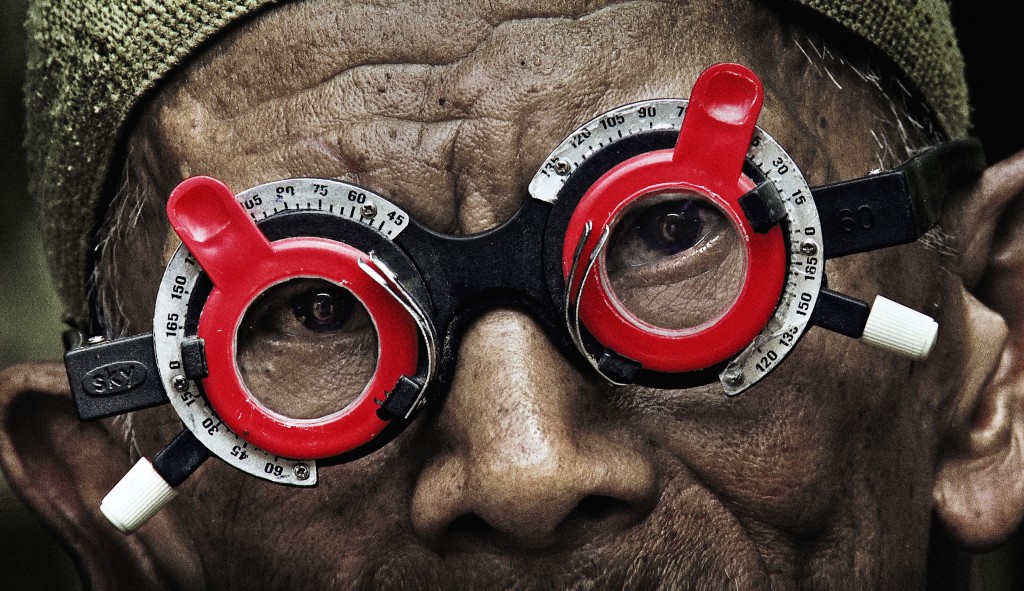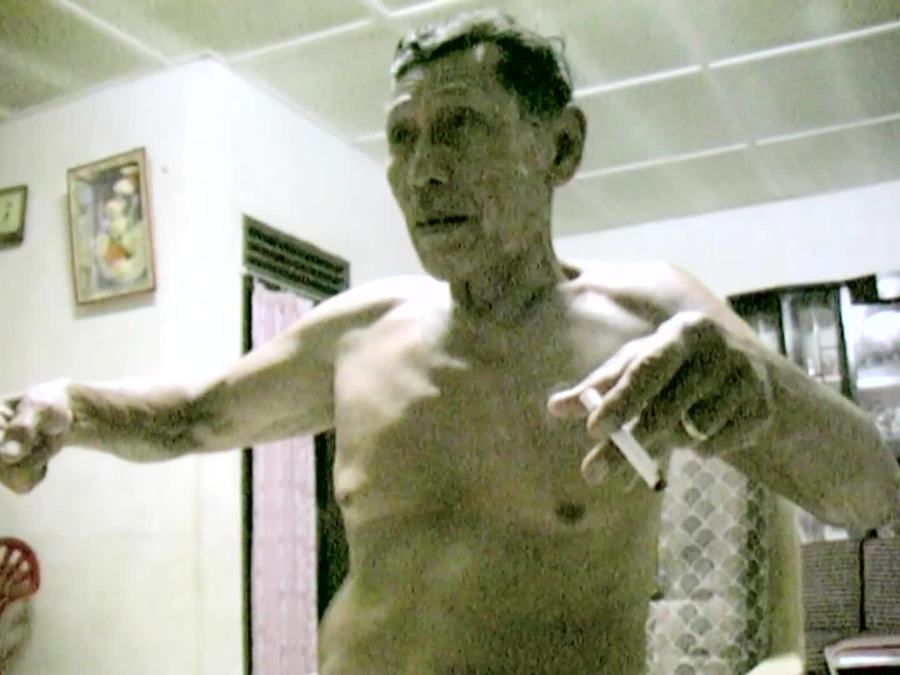“I’ve never thought of myself as an activist. I do think, though, that the purpose of art is to force us to confront the most painful and important aspects of who we are.”
—Joshua Oppenheimer, interviewed by Jessica Kiang at Indiewire
American-born filmmaker Joshua Oppenheimer is a 1997 Marshall Scholar, a 2014 recipient of the MacArthur “Genius” Award (the same year that Alison Bechdel was so honored), and director of Academy Award nominated documentary The Act of Killing (2012). From his earliest films, he’s experimented with new forms with which to explore big themes and historical forces, and he’s explored issues of representation and “truth” inherent in the form in articles and books on the subject of non-fiction and documentary.
“In so-called ‘fly-on-the-wall’ documentary, there’s a claim that the camera is a transparent window onto a pre-existing reality. But what really is happening is that the director and the film crew and the subjects are collaborating to simulate a reality in which they pretend the camera is not present,” he explained at the 2015 Based on a True Story documentary conference. “No one forgets the presence of the camera, no matter how long it’s there. All documentaries are performance. They are performance precisely where people are playing themselves.” It’s the quantum physics of filmmaking: the act of observing changes the behavior of the observed. His solution is to incorporate the tools and the practice of filmmaking into the structure of the film.
His collaborative 2003 documentary The Globalization Tapes (“written, directed and filmed by rank-and-file members of the Plantation Workers’ Union of Sumatra,” reads the credits), confronted the effect of colonial economics and globalism on plantation workers in Sumatra, Indonesia. The experience led to a handful of shorts that sought new ways to explore issues of economics and politics and consumerism in small jabs of commentary: A Brief History of Paradise as Told by the Cockroaches (2003), Market Update (2003), and Postcard from Sun City, Arizona (2003). These are experimental in the true sense of the word: experiments in representing complex ideas in the briefest of formats. He uses both symbolic and mundane imagery and redefines the images with contrasting and alienating soundtracks.
The interviews with workers also led directly to the project that occupied him for nearly a decade. The Act of Killing looked at the mass killings of over 500,000 people identified as Communists by government sanctioned death squads and militias in Indonesia in the years 1965-1966. Muzak: A Tool of Management (2004), his first short to directly address the Indonesian genocide, straddles the socio-economic issues of his earlier films and the historical excavation of what would become The Act of Killing. As a member of the death squads recalls his acts of murder as if reliving his high school sports career, Oppenheimer both disconnects the viewer from the savagery of the words (read in subtitles across the screen) with a soundtrack of bouncy Muzak and commentary on the psychological uses of Muzak as a “non-entertainment effect.” The normalization of such inhuman acts is equated with the dehumanization of labor.
It’s a first step toward finding a way of confronting not simply the historical fact of the sanctioned genocide and the social background of the event, but the legacy of that violence in the modern culture, while acknowledging his participation in the process. But clearly Muzak: A Tool of Management would hardly be seen outside of film festivals. His challenge was to engage an audience while redirecting their engagement. So Oppenheimer invited some of the most prominent and famous veterans of the death squads, who more than forty years after the events are not only free but continue to openly perpetrate crimes and proudly extoll their record of killings, to recreate their acts of violence for the camera in whatever form they see fit. And they did, making their own movie modeled on American cop dramas, gangster films, horror films, even musicals. Oppenheimer filmed them film themselves as the heroes (and sometimes the victims) of a brutal genocide reimagined as a Hollywood movie. “What we’re seeing is dramatization of the present-day fantasies, scripts, stories that the perpetrators are telling themselves so that they can live with themselves,” he remarked at the BOATS conference. It’s the key to power of his approach: seeing how the stories created by the killers offer insight to the culture as a whole and the participants individually, and how dredging up these memories affects them today.
Oppenheimer’s new film, The Look of Silence, which is currently making the film festival rounds, was conceived at the same time as The Act of Killing and explores the same history and legacy, but from different perspective and focus. The Act of Killing was “about storytelling, fantasy and guilt, and about how victors’ history is always self-deception and what that does to us as humans: the hollowing out, the dry rot of an imagination that nevertheless is flamboyant and exuberant,” he told Jessica Kiang. “And I knew I would make another film, about what it does to the human body, the human mind, to a family, to have to live for fifty years in silence and fear. And that’s The Look of Silence.” Oppenheimer accompanies Adi Rukun, an optometrist with a traveling practice, as he makes his rounds. Rukun’s brother was murdered during the mass killings and he comes in contact with members of the death squads as he travels. With the camera trained on these meetings, Rukun confronts them, often while giving eye tests.

The ethical issues go beyond representation. Part of the production budget was used to relocate Rukun and his family before either of the films were publicly screened as a protection against possible reprisals. As a filmmaker, he has a responsibility to the present as well as to the past. “Nothing can bring back the dead who were killed in the genocide, but at the same time, nothing can make whole the lives that have been destroyed by fear and silence,” reminded participants of the BOATS discussion. “I felt very strongly that The Look of Silence, should be a kind of poem made in memoriam to all that’s destroyed, not just through killing but through the impunity that continues to exist in the present. No matter what good might come of these two films, nothing can restore all that’s been lost.”






